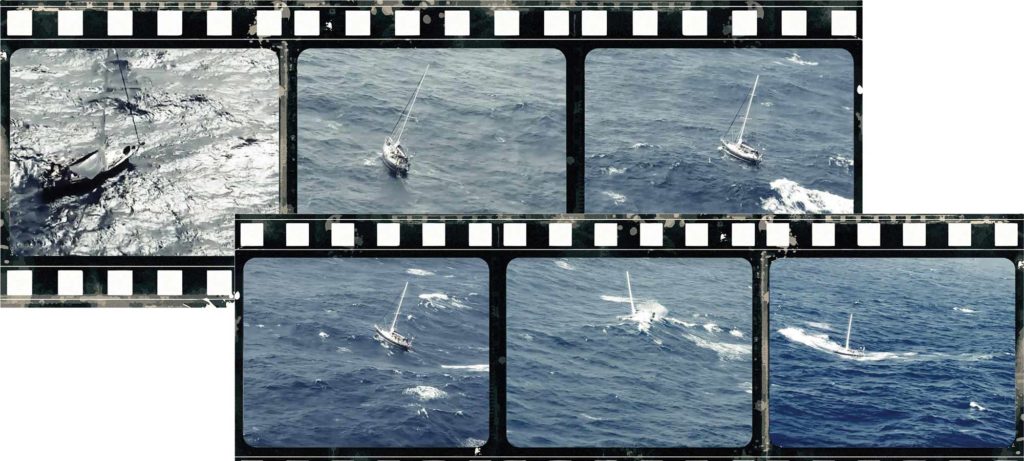
Homing in on Washington state with just 150 miles remaining to cap off a 16-year circumnavigation and 70,000 miles of safe ocean sailing, Joy and Jim Carey, aboard their cherished 45-foot yacht, Kelaerin, were about a day away from popping the Champagne to celebrate their accomplishment. Then, in the dead of night, in rising breeze, with the finish line so near, they encountered a wave unlike any other.When Jim and Joy Carey set out to cross the Atlantic Ocean from Florida in 2002, they had no intention of voyaging around the planet. The Careys had sailed their Taiwan-built Omega 45, Kelaerin, from their home in Washington state to the Sunshine State a decade earlier, and had been back and forth to the Pacific Northwest in the intervening years as Jim wrapped up his career as a professional mariner. Following his retirement, the couple planned on taking a year to complete an Atlantic circle, but something unexpected happened once they reached Gibraltar.They kept on going. And going. And going.
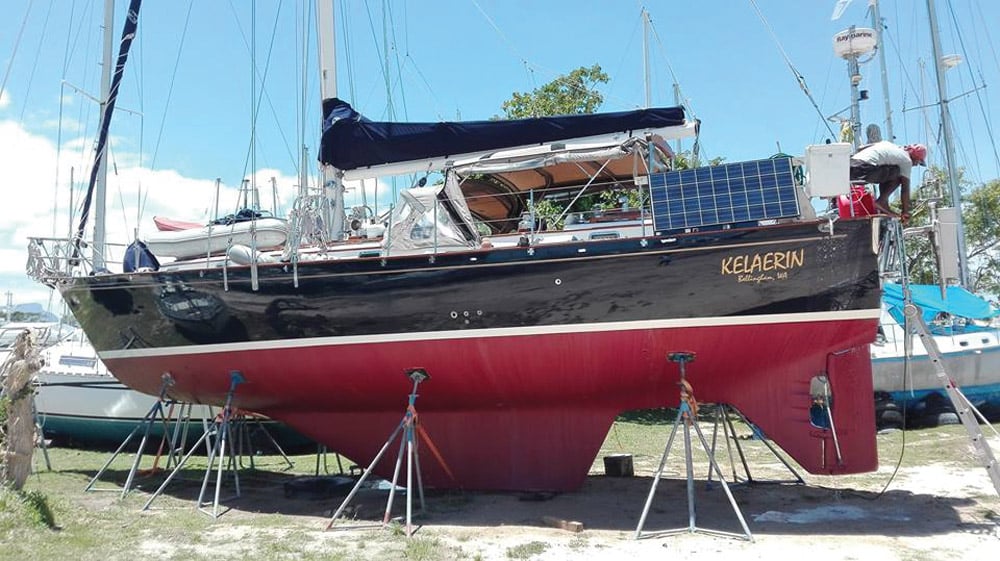
By May 26, 2018, when they set out from the Hawaiian island of Oahu on the final leg of their journey to Bellingham, Washington, the Careys had seen the world. Their travels aboard their beloved Kelaerin, which they’d purchased in 1991, had been extensive, meandering and deeply satisfying. The Careys were never in any hurry; they thought nothing of lingering for a year or more in places they loved, or even retracing their route to again enjoy a favorite cruising ground. The Mediterranean. The Middle East. The Black Sea. The Red Sea. Indonesia. Southeast Asia. The Philippines. The vast Pacific. Tens of thousands of miles under sail. Planet Earth was their oyster, and they’d slurped it all up.
“It was cool,” Joy said.
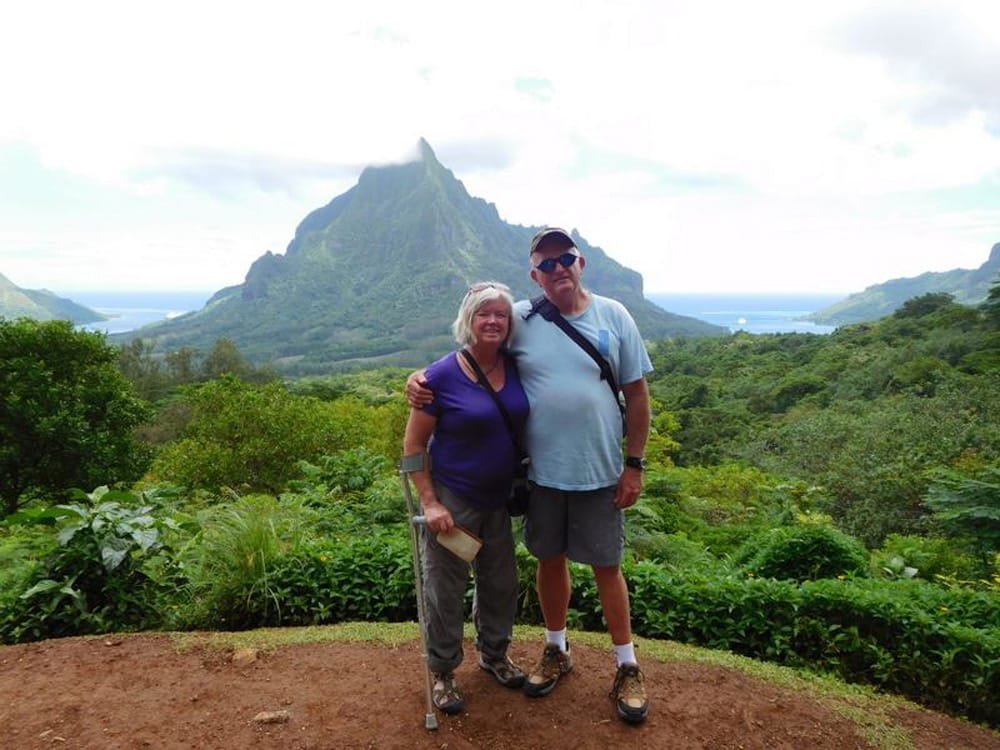
So, when they left Hawaii in late spring, there were no more boxes to tick. On the other end of their last passage awaited their daughters, Erin and Kelly, with bottles of bubbly and packages of M&M’s, a family tradition since they’d started sailing with the girls all those years before when they were still little kids. Joy planned on hoisting the courtesy flags of the 50 countries they’d visited as they approached the docks. She’d already planned it all out in her mind’s eye.
It wasn’t to be.
Instead, what happened to the Careys — the inconceivable loss of their boat and a dramatic rescue at sea, both about a day away from completing their long and fulfilling circumnavigation — is both heartbreaking and almost incomprehensible. The following account has been derived from a Facebook post written by Joy shortly after the incident and from interviews I conducted with the couple in early July. Over the years, I’ve written a lot of stories about a lot of sailors. This, I’m afraid, is probably the cruelest, strangest and most unfair.
You’d be hard-pressed to find a cruising sailor and skipper more experienced and accomplished than Jim Carey. His whole life has been about boats and the water, starting as a Sea Scout; onward to stints in the U.S. Navy and the Merchant Marine; and culminating in many years logging hard miles in the Bering Sea, the Aleutian Islands and elsewhere aboard oceangoing tugboats and barges, first as an engineer and then as a captain. All this before rounding the globe on his own yacht. It’s no exaggeration to say that when it comes to the high seas, Jim has pretty much seen it all.
And, as he kept a weather eye on the offshore Pacific forecasts and GRIB files while exploring the Hawaiian Islands in advance of Kelaerin‘s trip last May, he basically liked what he saw: “As the delineation of the sun progressed northward, we could see the high starting to build in and the lows that come from Siberia and northern Japan be pushed a little farther north into Alaska. By the end of May, it looked pretty good, so we took off.”
Kelaerin held a course almost due north from the islands until reaching 38 degrees north. Jim said, “Then we took a hard right, and at that point, we were on the tip of the high, on its northern edge, and headed more or less toward the West Coast. At about 137 degrees west or thereabouts, we started on a direct line for Cape Flattery (at the mouth of the Strait of Juan de Fuca).”
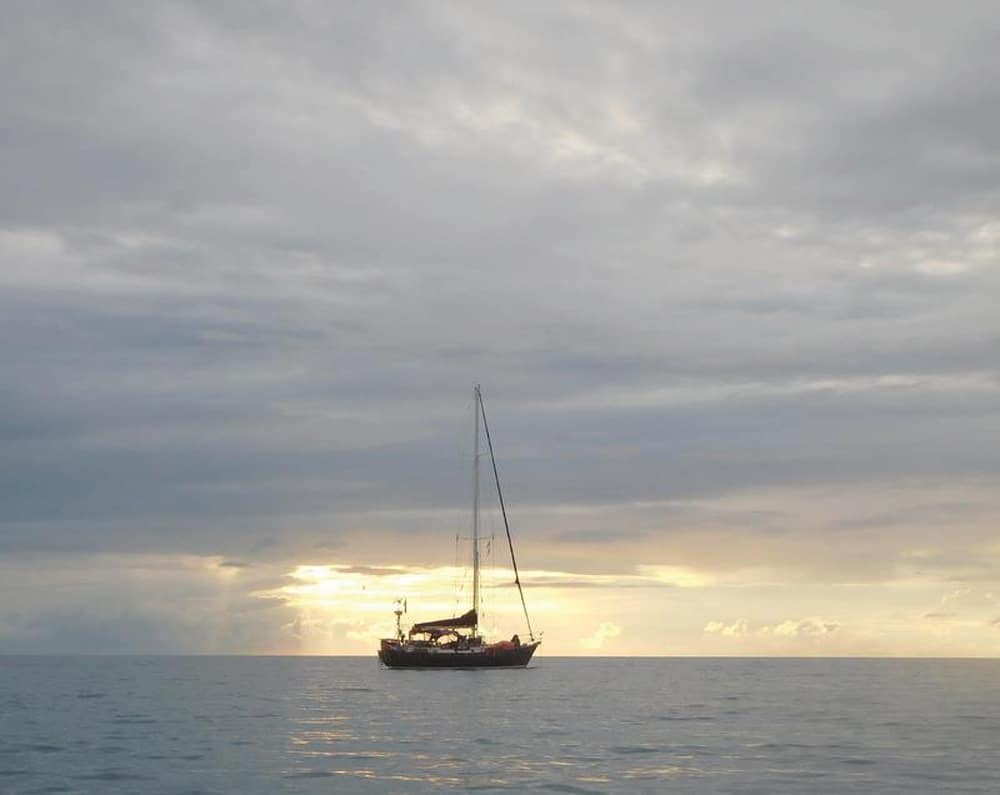
It was a bouncy ride, but with the westerly flow from the high, Kelaerin was knocking off the miles, averaging a steady 5 knots, on an ideal heading … straight for the barn. The distance to go grew shorter and shorter. Jim continued to download twice-daily GRIB files, and the forecast remained good. In fact, from about 150 miles out to sea right to the coast, the winds appeared to go very light — under 5 knots — and from the southwest. Jim allowed himself to think they might roll the final miles into the cape under spinnaker, and wouldn’t that be a fine way to wrap up the proceedings? And if the breeze crapped out altogether, since they’d been under sail exclusively since leaving Hawaii, at the very least there’d be plenty of fuel to motor on home.
Then, with fewer than 200 miles to sail, suddenly, and ominously, things changed.
The first inkling of brewing trouble was a GRIB file Jim downloaded on the evening of June 15. The forecast now called for north or northwest winds of up to 26 knots, which meant higher gusts: not terrible, but not pleasant either. “It looked like a squash zone,” Jim said, referring to the tighter bands of breeze. As predicted, on the 16th, it filled in and continued strengthening, all day long. But the odd part was the seaway, which began to take on a persona of its own.
Then the sun went down.
“The seas got more nervous,” Jim said. “They were confused to begin with. They were getting jittery. The boat was just jerking around. Every now and then it would fall into a hole. It just wasn’t plain sailing.”
The changing conditions, and the new northerly, necessitated a course change. Jim kept falling farther off the wind to keep it abaft the beam. The straight-line shot to Cape Flattery was a fleeting, distant memory.
“By midnight, we were sailing downwind under bare poles with pretty good seas, but the boat was handling it great,” he said. “The Aries windvane was steering like a champ. We were doing about 4.5 knots, which was a good speed for the Aries. There was plenty of power for it to steer, and it was very sensitive. So it was doing a good job.” There wasn’t much to do but maintain a sharp lookout and hang on. Around 0230 on June 17, Joy disappeared below to catch a short catnap. In all their time cruising, she’d never seen such seas. Jim remained in the cockpit. Forget 26 knots. It was gusting into the 40s. So much for the cakewalk home.
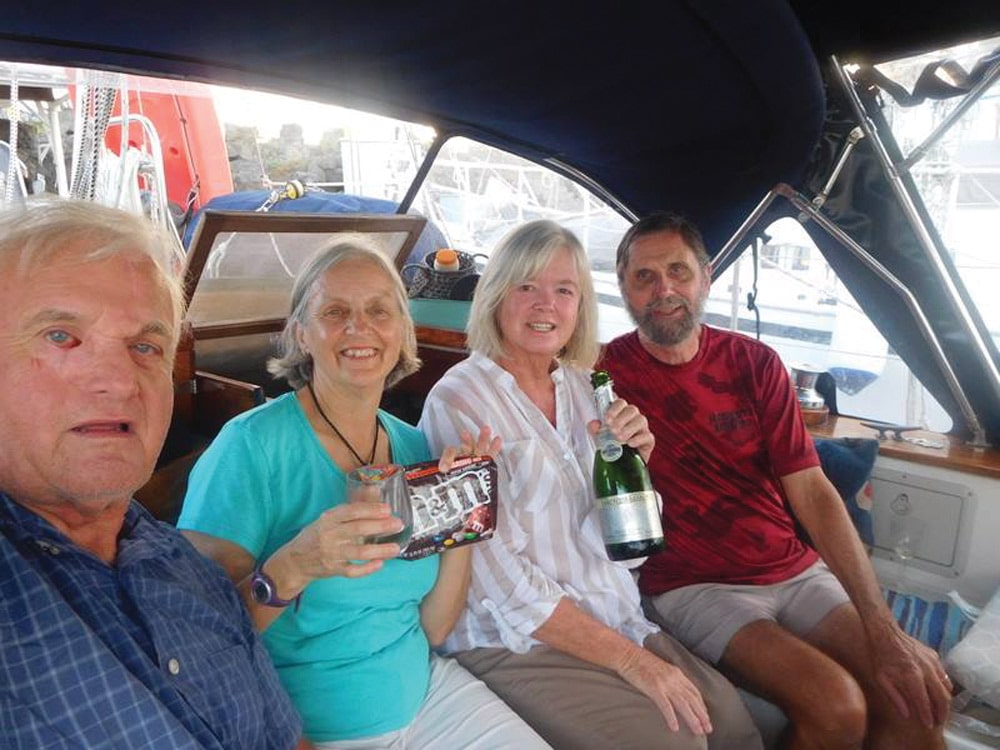
An hour passed. The boat surged on a wave. White water streamed down both sides of Kelaerin. The boat slowed down. The wave dissipated. This was nothing especially new. Jim, sitting to starboard and watching the compass, never saw the next wave, the one that came steaming in from port and caught Kelaerin broadside. But he felt it. It was unlike any wave in the steady train that preceded it. Had this long and getting longer day been a barroom brawl, this was the flat-out, knock-down sucker punch.
“The boat just picked up on that wave and the wave slammed it down,” he said. “It was pretty much upside down.” Later, Jim tried to calculate the physics of the crash. The masthead VHF antenna washed away during it, meaning the spar was seriously dunked. “I don’t think we did a 360-degree turn, but we went [to] at least 220 [degrees],” he said. “It was definitely not the wave we surged on. I guess it was a rogue wave. Once we righted, we didn’t have any more waves like that. We had that one wave.”
Jom Carey never saw the wave that came steaming in and caught Kelaerin broadside. It was unlike any wave in the steady train that preceded it.
It didn’t matter. For all intents and purposes, it was Kelaerin‘s last one.
Down below in the aft cabin, Joy also withstood the impact. “It was so hard it literally felt as though we had been hit by a train while sitting on the tracks,” she wrote. Then … water. Everywhere. She was entombed by it. For a moment, she wondered if she’d ever take a breath of air again. First, she was on the ceiling, then back in her berth, then her feet were on the floor. They were underwater.
She gathered her wits and couldn’t believe her eyes (it was chaos) or her ears (the noise was deafening). To enter the main cabin, she had to clear the companionway ladder from the doorway, where it was wedged with a scuba tank that had been dislodged from its holder. The saloon looked like a bomb had gone off. Lockers were torn asunder, their doors broken or missing, their contents sloshing in water covering the cabin sole. The floorboards had vanished, the tanks exposed to view. For the 27 years the Careys had owned her, Kelaerin was lovingly, painstakingly maintained. She was a member of the family. Now she was broken and brutalized. What in God’s name had happened?
Back topside, though blood was streaming down his face from a deep gash over his left eye, Jim also took stock of the situation. He’d survived the wallop from his perch in the center cockpit with a death grip on the Edson steering pedestal, the base of which was now broken, though amazingly enough, they still had steering. He’d watched the dodger and Bimini blow away “like newspaper in the wind.” The dinghy, which had been lashed down to handrails on the forward deck, was missing. Neither the stainless rack for the life raft, secured to the deck with a dozen bolts, nor the raft itself were still there.
Forward of that, the massive Lewmar Ocean Series hatch, which had been down and dogged for the entire trip, was popped open and standing straight up. Had it acted like a scoop for the literally tons of water now washing through the boat? It was the only explanation that seemed to make any sense.
Joy had a fleeting thought. She couldn’t remember if she’d told their daughters where they stashed their assets, “Their little inheritance.”
Joy came on deck to find Jim standing at the wheel, driving Kelaerin down the face of a wave. She looked around, stunned by what she did and didn’t see: no raft, no dinghy, no dodger, broken bits of cockpit coaming and other detritus, her husband bloodied but unbowed. He asked her to put out a mayday call on the VHF, which went unanswered. Then they swapped positions so Jim could go below and assess the situation.
It was a grim sight. “With the boat pitching and rolling, the water on the cabin sole was like a little tidal wave going from bow to stern and back,” he said. The SSB radio was out, as was at least one of their two VHF radios. But the batteries remained secure and operational, and the wind generator was still intact and whirring like a banshee: They had power. Jim switched on all four electric bilge pumps, including the 4,000-gallon-an-hour submersible in the engine room, the one with the 1½-inch discharge “like a fire hose.” For about 20 minutes, they ran fine and took the water level down several inches, but then the paperback books floating in the murk and turning to mush — “like oatmeal” — clogged the pumps. Though it was hard to see while blinking blood out of his eyes, Jim managed to unsnap the main pump from its base and clear the screen, which he did countless times during the next several hours. But it became a losing, futile proposition. It would run a few minutes and just clog again.
At about 0530, two hours after the smashup, the Careys were in nearly as bad a shape as Kelaerin. They were both shivering. Joy’s lips were turning blue. Jim’s hands were locking up. Joy had a fleeting thought: She couldn’t remember if she’d told their daughters where they’d stashed their assets, “their little inheritance.” It’s amazing, she later thought, what exactly goes through your mind. “I looked at Jim and said, ‘Should we set the EPIRB off?’ and he said, ‘Yeah, we better set it off.'” He retrieved it from its holder and pushed the button.

The idea of abandoning the boat had not set in. What Jim was really after was a stronger pump. He wasn’t ready to concede anything.
Jim’s contacts on Kelaerin‘s EPIRB registration were a pair of old tugboat pals whom he spoke to daily via ham radio. When the Coast Guard reached them, they were able to confirm the Careys’ position from the previous evening’s call; their course and destination; and that they’d reported encountering rough weather. The Coast Guard responded by immediately dispatching a helicopter from its base in Warrenton, Oregon.
Several hours later, the second, still operable VHF radio on Kelaerin crackled to life. It was the Coast Guard chopper, about 20 minutes out. Amazingly, the chart plotter was still functioning, and Joy was able to relay an exact position. The airmen continued calling and asking Joy to count down numbers so they could pinpoint the boat via their radio-direction-finding equipment. Soon enough, the helicopter was hovering overhead. A swimmer was dropped off to starboard. Jim was still steering, Kelaerin still surging at over 4 knots under bare poles. The swimmer reached the steering vane and the boarding ladder Jim had dropped, and clambered aboard, his fins still on. Jim was astonished. Man, he thought, that guy is in good shape. It was 0933, almost exactly six hours after the rollover.
The two men discussed the options. Jim reiterated that he needed a better pump. The guardsman said, “Well, our pump isn’t going to pump that slop either. You need to make a decision. We’ll give you a pump, or you’re going to have to get off.”
Jim’s teeth were chattering, but despite everything, he was still a sailor and a skipper in full command of his faculties. Here’s what he thought:
On the one hand, the mainsail had been ripped out of the stack pack and was toast, but the yankee was still furled up and the staysail was still hanked on to the forestay. Two good sails. Maybe they could continue running downwind until the seas laid down and then set sail and bring her home.
But…
On the other hand, there were no comms other than a short-range VHF. The engine was swamped. The crankcase was probably full of water. The water tanks were below the sole, and the freshwater supply was likely contaminated by seawater. The stove had been ripped off its gimbals; there was no way to even make a hot cup of tea, never mind a meal. It was surely only a matter of time before something sloshing inside the boat jammed the steering cables or the quadrant, leaving them adrift. If they were rolled again — a likely scenario if they lost steering — there was no life raft or dinghy in which to retreat. They were both on the verge of hypothermia. It might not be long at all before they succumbed to exposure. The only way to bail the boat was by hand, something neither had the strength to do for very long.
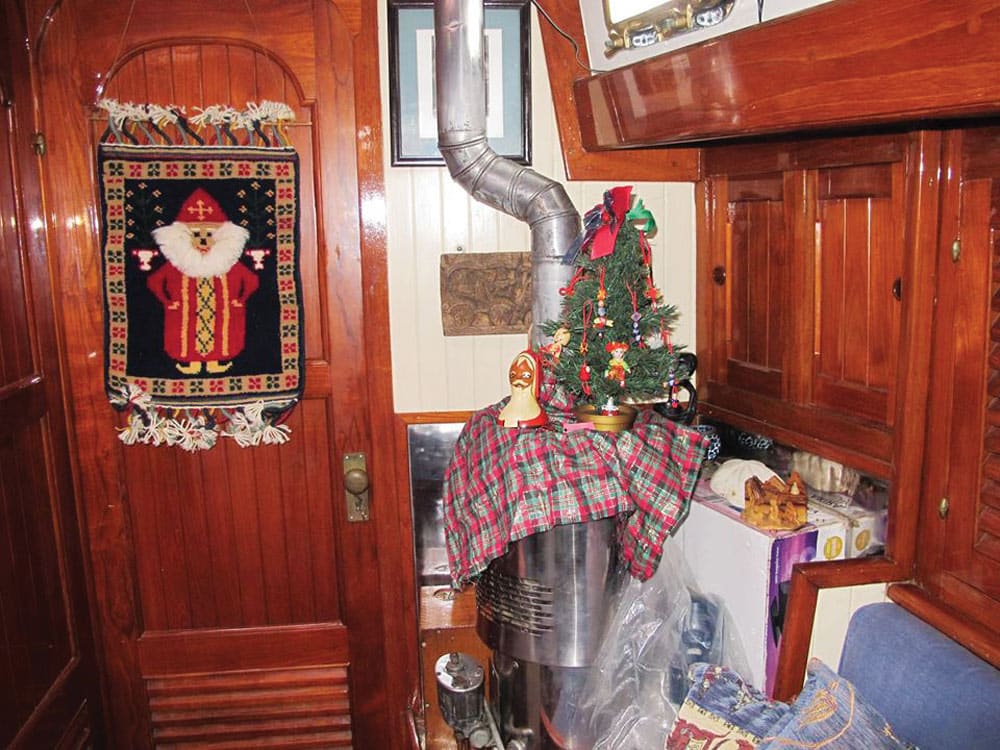
As a prudent and experienced seaman, Jim understood there really was no choice in the matter. “OK,” he told the swimmer. “We’ll get off.”
“Then everything went at hyper speed,” Joy said. “The Coast Guard swimmer said I had only a minute to gather my things.” Perhaps surprisingly, the decision to leave Kelaerin still caught her by surprise. She’d collected some items and stashed them in a dry bag and a small cooler earlier, when they’d first fired off the EPIRB, not really thinking she’d be leaping into the water with them. Now that such a scenario was imminent, she realized their passports, wallets, cash, good camera and other valuables were either missing or unreachable. Too late.
In the frantic moments that followed, neither the cooler nor the computer she’d grabbed at the last moment ever made it off Kelaerin. Like almost everything else they cherished from their years of cruising, all the hard drives, pictures, logs and mementos, they stayed on the boat, forever gone. “It’s an unimaginable loss,” Joy would later write.
As they made their way to the stern, Jim and Joy were still wearing the inflatable vests they’d donned throughout the entire ordeal. “Inflate your vests,” said the swimmer. “Jump.” Joy hesitated; a rolling wave was approaching. “Go now!” he commanded. All of a sudden, they were all in the drink.
The rescue was nothing shy of heroic. It turned out the helicopter was at the extreme limit of its range when the Careys were winched aboard in baskets. It diverted from Warrenton on its return 180-mile flight, and set down in nearby Astoria. When it landed, Jim heard the pilot tell ground control they were down to one minute of fuel. One minute.
The Coast Guard crew took good care of Jim and Joy on the way in, wrapping them in covers, giving them water — they’d never had so much as a sip the whole time they tried to save Kelaerin. An ambulance arrived and whisked the couple off to the hospital. Jim was put on a saline drip and received seven stitches; they were given T-shirts and paper pants.
Jim has no regrets about calling in the coasties. Given the circumstances, it was the sound, seamanlike thing to do. If Joy could change one thing, she’d have put the important stuff in a ditch bag. They did have one prepared, but it was full of things for a life raft, not for the unimaginable circumstance of plunging into the sea. In any case, that disappeared when Kelaerin flipped.
The Careys didn’t leave a transponder on Kelaerin. They were well out of the shipping lanes, and Jim believed the boat sunk almost immediately.
But in mid-July, Joy sent me the following email: “A ray of hope. Our life raft was found and reported to the Coast Guard. We are currently looking at weather, currents, to see if there is any way we could still find Kelaerin. It’s been a month, but I have heard of strange discoveries of yachts that were abandoned. You see a whole bunch of them in American Samoa, for instance. We have fishermen friends of a friend who are ‘looking’ out for it. … We may head down to Oregon soon and camp out near one of the active fishing harbors and see what happens.”
You never know, right? Finding Kelaerin might be as unimaginable as what happened to Joy and Jim, as experienced and capable as any cruisers could be, a long day away from putting the exclamation point on the trip of a lifetime. You just never know.
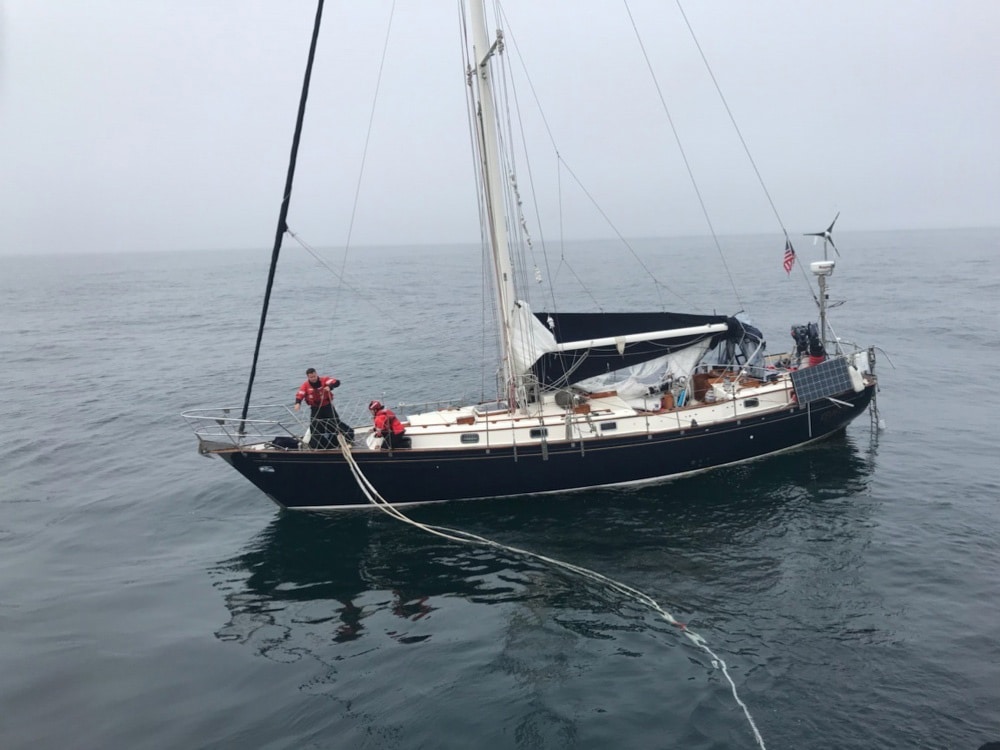
UPDATE: The Boat That Was Lost … And Found!
Shortly after going to press with the previous story on Kelaerin, on July 22, a miracle came true. On a routine patrol, the Coast Guard cutter Barracuda found Kelaerin and took her under tow. She was 440-miles south-southeast from the position she was last seen, over a month earlier. Eventually, as they closed on the coast, the crew of Barracuda transferred the tow to a smaller vessel, and Kelaerin was safely brought to a dock in Fort Bragg, California.
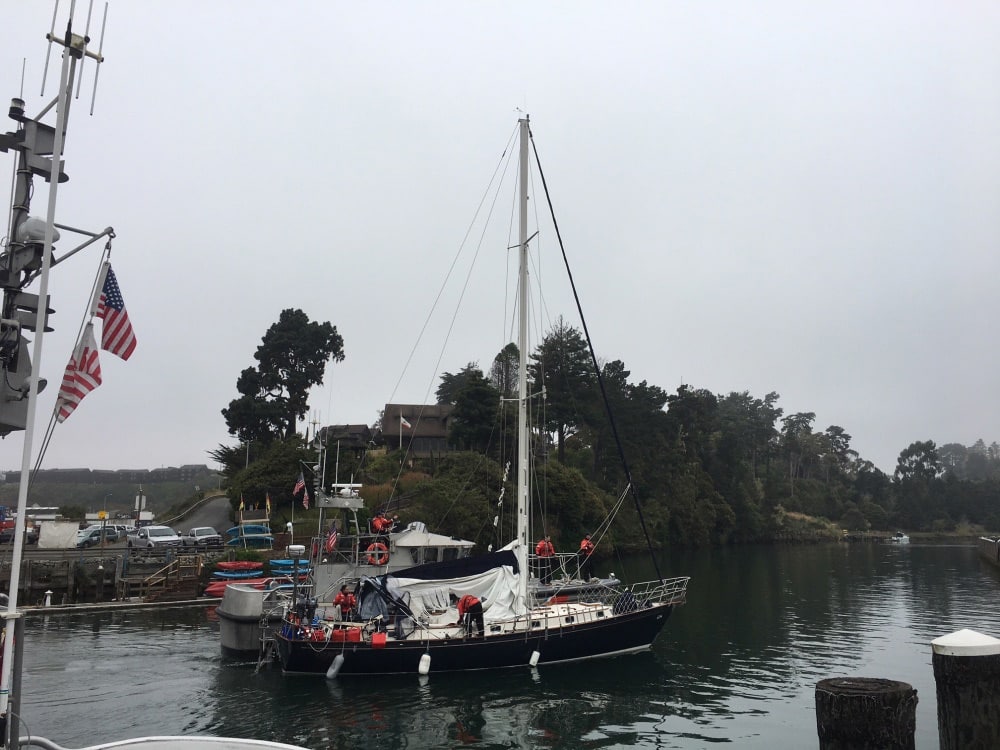
Before driving to Fort Bragg to reunite with Kelaerin, Joy and Jim Carey emailed Cruising World. Clearly overjoyed, they wrote, “Think we’ll have a project going for quite a while!” Remarkably, in the photos released by the Coast Guard, Kelaerin seemed to be floating on her lines, though the extensive damage topside was clearly visible.
Not all the news is great these days, and the loss of Kelaerin was a terribly sad tale, given how close the Careys were to fulfilling their dream. It just seemed too unfair. But it’s now a story with a happy ending. And we couldn’t be more pleased for these deserving cruisers.
Herb McCormick is CW’s executive editor.





